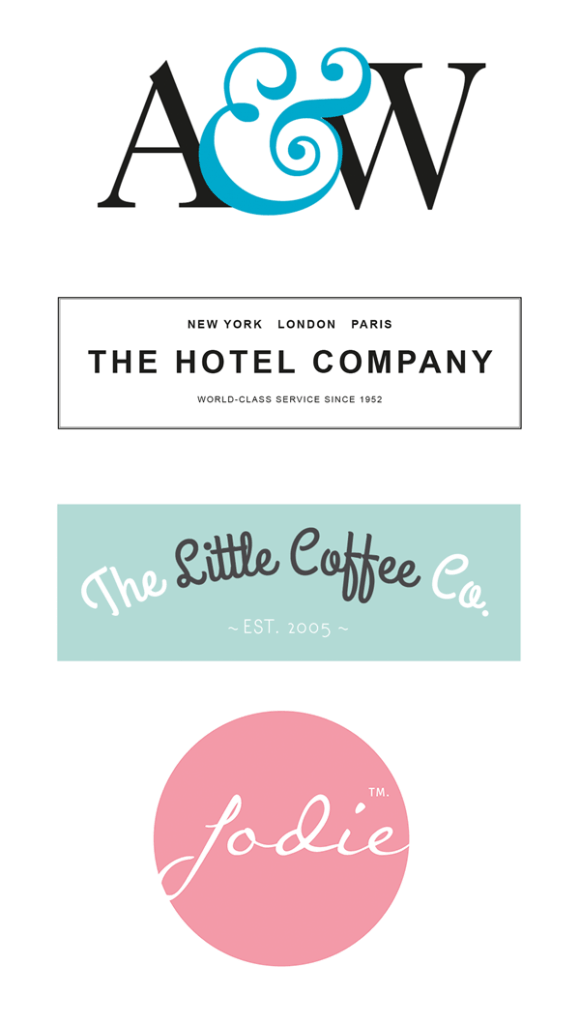What software to use to create logos?
What software to use to create logos?
If you are new to logo design, one of the most important decisions you will have to make is deciding which software to work with.
In this series of “Quick Tips” we will look at the most common work scenarios, as well as help you choose the right software for your project.
Need to create a logo? Read on to discover the best tools for working in business …
Which program to choose for creating logos?
Many logos look simple enough, but your creative ideas can be overwhelmed if you don’t find the right software for the job.
Each designer has their own workflow. But many people prefer to first make sketches on paper, scan them and only then draw on a computer. By creating a logo in a vector, you make it more flexible for work, editing and transformation – and thus, satisfy the needs of the client. Let’s take a look at the most popular vector programs:
Option 1: Adobe Illustrator
Illustrator is well-known to the Design & Illustration team at Tuts + and is a favorite among vector illustrators. It is a versatile and intuitive graphic logo maker.
As a vector art and illustration program, Illustrator is ideal for creating logos from sketching. You can also work with scanned images by inserting them into the layout and using the panel tracing.

The main advantage? Illustrator is an advanced vector program that is very simple and intuitive to use. Whether creating a simple monochrome graphic or a more complex 3D logo, Illustrator is easy to handle for any level of graphics. In addition, the color management capabilities are fantastic.
Disadvantages? After tracing scanned images, the graphics quality may differ from the original. While tracing can lead to a cleaner logo design, you can see it as both an advantage and a disadvantage.
Option 2: CorelDRAW
The main competitor and a good alternative to Illustrator is CorelDRAW. It’s easy to get started here, lacking the “embellishments” and “bows” that came with Illustrator CC, making it a solid choice for newbies to vector graphics.
A large number of logo designers are still loyal to Corel, and value the ease of use and zero overhead that sets Corel apart from vector software.

The main advantage? CorelDRAW is a more budget-friendly alternative to Illustrator, but you won’t have the hassle of creating most logos.
Disadvantages? Some Illustrator aficionados will argue that CorelDRAW lacks sophistication and advanced features. You may also notice that most of the design and branding agencies still prefer Adobe products.
Option 3: (fallback) Adobe InDesign
InDesign? For logos?
This may not be the most traditional choice, but if you have a type logo rather than a sign, InDesign is ideal for advanced typography.
For inspiration, take a look at this tutorial on how to create a logo in InDesign.
Verdict?
There are two stages in the process of creating a logo design.
First, you need to get inspired and create a sketch, and here it all depends on your personal preferences – whether you prefer to draw the logo by hand or do tracing on a computer (Illustrator is the best tool for this), or you will rather create a font logo from scratch and refine it with various font effects (InDesign will help you with this).
At the final stage, it is very important to decide on a program to work with. At this stage, you need to create the final version of the logo, completely ready for use. No client wants to receive a merged JPEG file; he needs to have an editable, transformable vector logo. With this in mind, we go back to vector programs, Illustrator or CorelDRAW to finish and export our logo.
And as long as you can convert your sketch into a finished vector logo, it doesn’t matter which way you do it. If you need a little inspiration, there is a huge collection of logos on Envato Market.
We would love to hear your opinion and your personal preferences regarding logo design software. Are you a fan of Adobe products, or do you prefer the simplicity of CorelDRAW? Maybe you are a fan of creating sketches by hand before digitizing them? Share your opinion in the comments below!
Source: lopart
…




